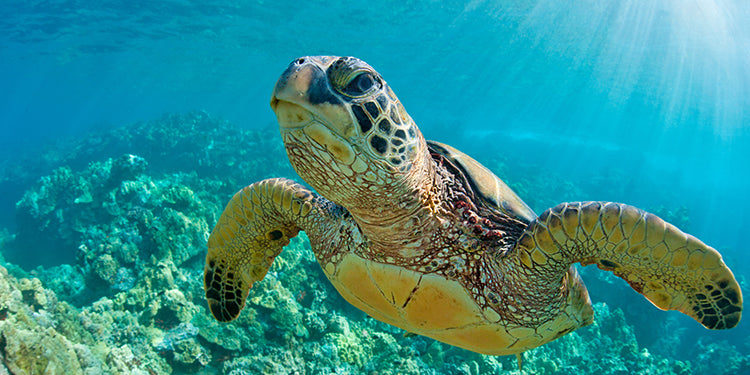Sending your students on fact-finding missions can be one way to do this. They can pull out a pre-assigned number of facts from informational texts at their "just-right" level and then compare the facts they picked with the facts picked by their neighbors. This encourages students to read closely to try to find the "best" facts about their topic.
If your unit is on animals, or habitats, or the ocean, for example, you could model this by taking a book on sea turtles and pulling out the fact that sea turtles come onto land to lay their eggs. Depending on the individual student's reading level, you might ask them to pull out more or less complex descriptions of their facts. Having a wide range of informational texts at different reading levels but on the same or similar topics is helpful for this exercise.
Pictured above are an example of the lower-level Sea Turtle book from Zoozoo Animal World (guided reading level F) and of the book Sea Turtle s from the intervention series Underwater Encounters (guided reading level S).
What is your favorite way of getting students to dive into informational text? Share it in the comments below!
To download information sheets with key features about the series shown in this post, click the images below. Zoozoo Animal World now features four additional habitats to those listed on the information sheet: ocean, desert, grasslands, and mountains.

|

|















































![6 Fun and Easy Activities to Practice Sequencing [Grades K-1]](http://www.hameraypublishing.com/cdn/shop/articles/Red_Typographic_Announcement_Twitter_Post-5_bf1ae163-a998-4503-aa03-555b038d1b76_600x.png?v=1689961568)
![Leveraging Prior Knowledge Before Writing and Reading Practice [Grades 1–2]](http://www.hameraypublishing.com/cdn/shop/articles/Red_Typographic_Announcement_Twitter_Post-4_600x.png?v=1689961965)




